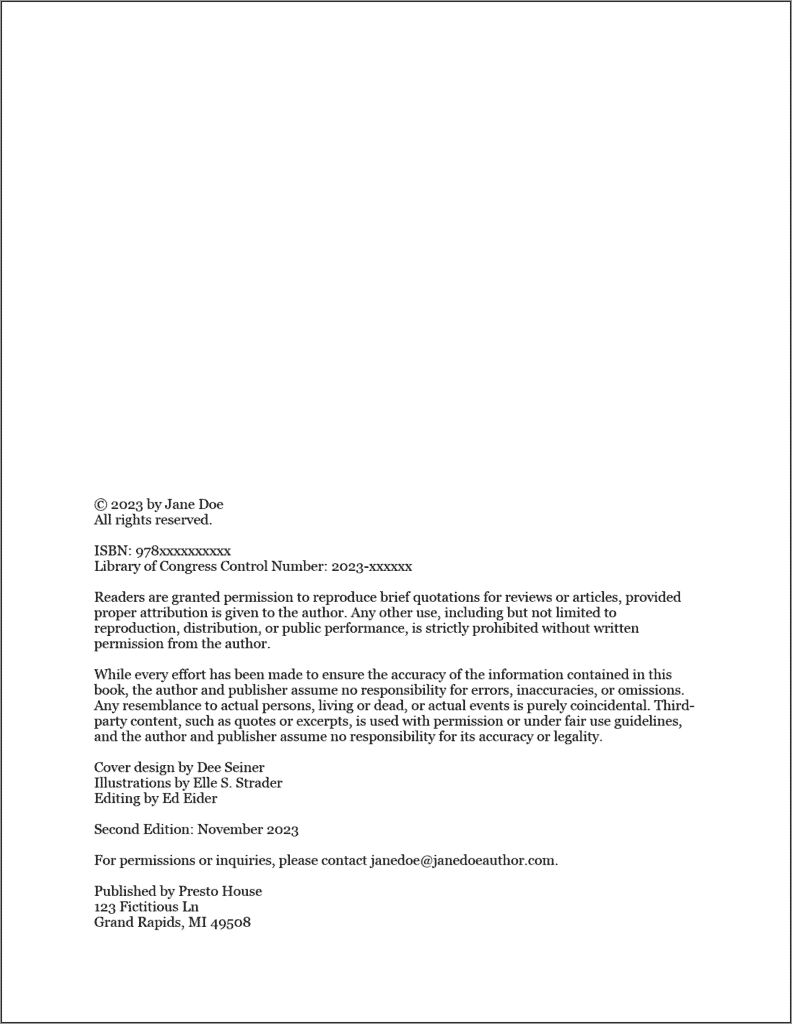
Your book is more than just a labor of love — it’s your intellectual property, and to properly protect it you must learn how to write a copyright page. The copyright page is a small but critical component that ensures you, the author, retain control over your work. In this guide, we’ll outline the essential elements to include on your copyright page and provide examples to help get you on your way toward protecting your work.
Before we go any further, however, please note that this article serves only as a basic guideline. While we wear many hats here at Presto Page, we are not lawyers, and none of the following is intended to be taken as legal advice. Therefore, always contact a lawyer if you have questions about book copyright.
How to Write a Copyright Page: The Basic Components
When you decide to write a copyright page, make sure you start out with the required foundational elements. These include:
- Copyright symbol (©)
- Year of publication
- Author’s name or names
- Statement of rights reserved
Example:
© 2023 by Jane Doe
All rights reserved.
ISBN and Library of Congress Control Number (LCCN)
Include the unique identification numbers assigned to your book, such as the International Standard Book Number (ISBN) and the Library of Congress Control Number (LCCN).
Example:
ISBN: 978xxxxxxxxxx
Library of Congress Control Number: 2023-xxxxxx
Permissions
Clearly state the permissions readers have regarding the use of your work. This text may include restrictions on reproduction, distribution, public performance, and so on. Be explicit about what readers are allowed to do and what requires written permission from you as the author or copyright holder. Make sure to leave no room for ambiguity.
Example:
“Readers are granted permission to reproduce brief quotations for reviews or articles, provided proper attribution is given to the author. Any other use, including but not limited to reproduction, distribution, or public performance, is strictly prohibited without written permission from the author.”
Disclaimers
In this section, consider any necessary disclaimers to protect yourself and your readers. This may include disclaimers related to the accuracy of information presented, potential liabilities, or third-party content.
Example:
“While every effort has been made to ensure the accuracy of the information contained in this book, the author and publisher assume no responsibility for errors, inaccuracies, or omissions. Any resemblance to actual persons, living or dead, or actual events is purely coincidental. Third-party content, such as quotes or excerpts, is used with permission, and the author and publisher assume no responsibility for its accuracy or legality.”
If your book includes copyrighted material used under the fair use doctrine, consider including a fair use disclaimer to explain why this content is included and how it’s being used.
Example:
“This book may contain copyrighted material used under the fair use doctrine. The purpose of such use is for commentary, criticism, or educational purposes, and the inclusion of this material is not intended to infringe upon the copyright holder’s rights.”
Remember to tailor these examples to fit the specific circumstances of your book. More importantly, consult with legal professionals to ensure that your Permissions and Disclaimers section aligns with the laws and regulations in your jurisdiction.
Credits
When you write a copyright page, ensure that everyone who contributed to your book is given proper credit for their work. This includes designers, illustrators, photographers, and so on.
Example:
Cover design by Dee Seiner
Illustrations by Elle S. Strader
Editing by Ed Eider
Edition Number
Specify the edition of your book, especially if it’s not the first edition. Readers may find it helpful if you include the edition date as well.
Example:
Second Edition: November 2023
Contact Information
Provide a way for readers or interested parties to get in touch, whether for inquiries or permissions.
Example:
For permissions or inquiries, please contact [email protected].
Publisher Information
In the Publisher Information section, it’s essential to provide readers with details about the entity responsible for producing and distributing the book. Make sure you provide your publisher’s name and physical address.
Putting It All Together
Here’s what a completed copyright page might look like. Feel free to add or remove ancillary information depending on its relevance to your project. Note that, in printed books, the text is placed at the bottom of the page. In a digital book, no such distinction applies.

Crafting a meticulous copyright page is not only a legal necessity but a professional courtesy to your readers. Use these examples and guidelines to create a copyright page that not only safeguards your intellectual property but also adds a touch of professionalism to your book. And remember: consulting with a legal professional is always a wise move to ensure your copyright page correctly aligns with the legal standards in your jurisdiction.
At Presto Page, we’re here to support you every step of the way. Whether you need assistance with self-publishing, design services, or any other aspect of self-publishing, we’re your partners in success. Contact us today to see what we can do for you!

